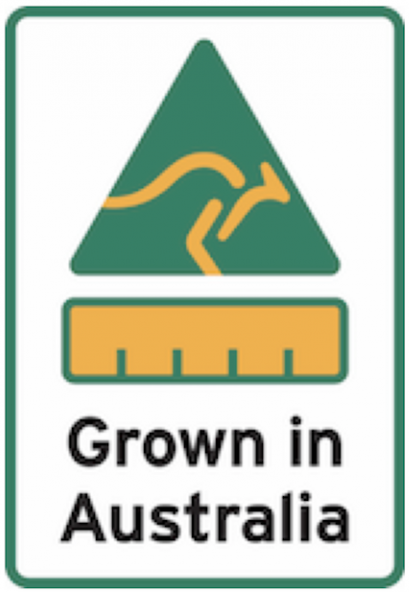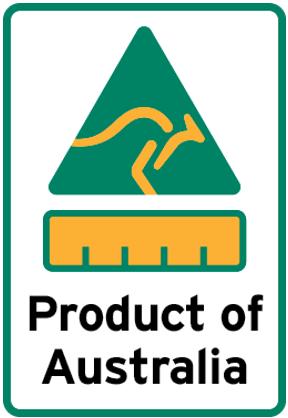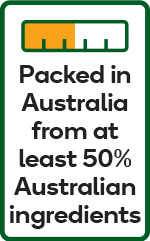Understanding country of origin labels
Country of origin food labels were introduced on 1 July 2018 so that the foods you buy need to display country of origin labels. Businesses that offer food products for retail sale in Australia must also comply with the Country of Origin Food Labelling Information Standard 2016 (Standard).
It is illegal for a business to make a claim that goods were grown, produced, made or packed in a particular country when this was not the case.
The type of label required for food products varies depending on:
- the category of food
- whether it was grown, produced, made or packed in Australia or another country
- whether it is packaged or not
- whether the food is a ‘priority’ or ‘non-priority’ food
- how the food is displayed for sale.
Food that was packaged and labelled on or before 30 June 2018 may not have the new labels, and can still be sold without the origin of food labels.
Types of origin claims
The key country of origin claims mean different things.
Grown in
A ‘grown in’ claim is a claim about where the ingredients come from and is commonly used for fresh food. It can also be used for multi-ingredient products to show where the food or ingredients were grown and processed.
Example

A carton of eggs that is labelled ‘Grown in Australia’ means that the eggs came from Australian-grown chickens.
Produced in
A ‘produced in’ claim, is a claim about where the ingredients come from and where processing has occurred. This claim is often used for processed, as well as fresh foods.
Example

A packet of pasta that is labelled ‘Product of Australia’ means that the pasta was made from scratch in Australia using only Australian ingredients.
Made in
A ‘made in’ claim, is a claim about the manufacturing process involved in making a food product.
Because it refers to the processing that has taken place, it doesn’t mean the food contains 100% ingredients from that country.
Example

A loaf of bread that is labelled ‘Made in Australia from a least 80% Australian ingredients’ means that the bread was baked in Australia using at least 80% Australian ingredients.
Packed in
A ‘packed in’ claim is used when a food product or ingredients have not been grown, produced or made in the same country. The product will need to display a label identifying the country it was packed in.
Example

A pack of mixed nuts that is labelled ‘Packed in Australia from at least 20% Australian ingredients’ means that, at a minimum, 20% of the nuts are Australian grown.
Imported food products
Imported food products must also display a country of origin label, but the label only needs to include a text statement, in a clearly defined box.
Example

A jar of jam labelled ‘Made in the USA’ means that the jam was processed in the USA.
Businesses also have the option to use a label with a shaded bar chart if the imported food contains Australian grown or produced ingredients.
Example

Priority and non-priority food products
There are different labelling requirements for priority and non-priority foods.
Priority foods
Priority foods include:
- fruit and vegetables
- meat
- seafood
- bread
- milk
- nuts
- honey
- cereal.
Most priority foods need to display graphic and text labels, which tell you how much of the food is Australian (if any). If a priority food was grown, produced or made in Australia, its country of origin label will also feature:
- a kangaroo in a triangle logo to help you quickly identify that the food is Australian in origin
- a bar chart and text identifying the proportion of Australian content in the food (if any).
Example

Cereal that is labelled ‘Made in Australia from a least 95% Australian ingredients’ means that the cereal was made in Australia using at least 95% Australian ingredients.
Priority foods can only claim to be produced or grown in Australia if they contain 100% Australian ingredients.
Non-priority foods
Non-priority foods only need to carry a text statement in a defined box about where the food was grown, produced, made or packed.
A product is a non-priority food if it belongs to one of these categories:
- seasonings (e.g. pepper, salt, herbs, spice powders or pastes)
- confectionery (e.g. chocolate bars, lollies, ice cream)
- biscuits and snack foods (e.g. chips, crackers, rice cakes, pork crackling)
- soft drinks and sports drinks (e.g. lemonade, flavoured waters, carbonated fruit drinks)
- alcoholic drinks
- tea and coffee (in dry, or ready to drink form)
- bottled water.
Other product claims
Sometimes businesses add words, or easily recognisable logos, symbols or pictures to their food packaging, which could suggest or imply a connection between the product and a particular country. For example, a statement such as ‘Proudly Australian owned’ next to an Australian flag tells you about the ownership of the company.
Businesses must ensure that any representations made about their products are clear, truthful and accurate.
Further information
Information on the Standard and further information about country of origin labelling is available from the Australian Competition and Consumer Commission website.
If you see a label of origin claim that you think is misleading or does not comply with the law, you can make a consumer complaint.


